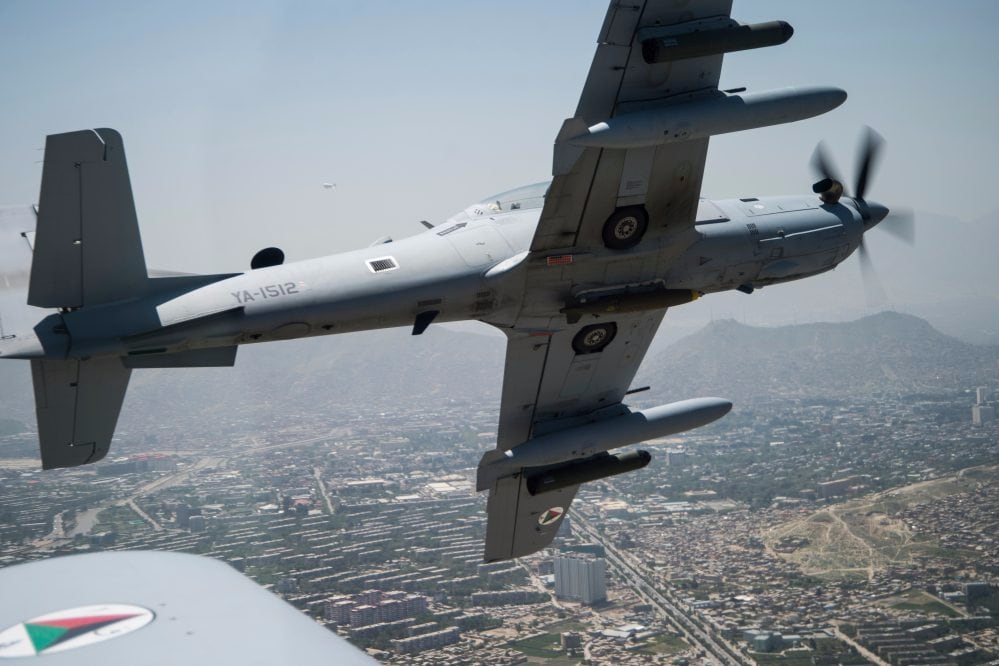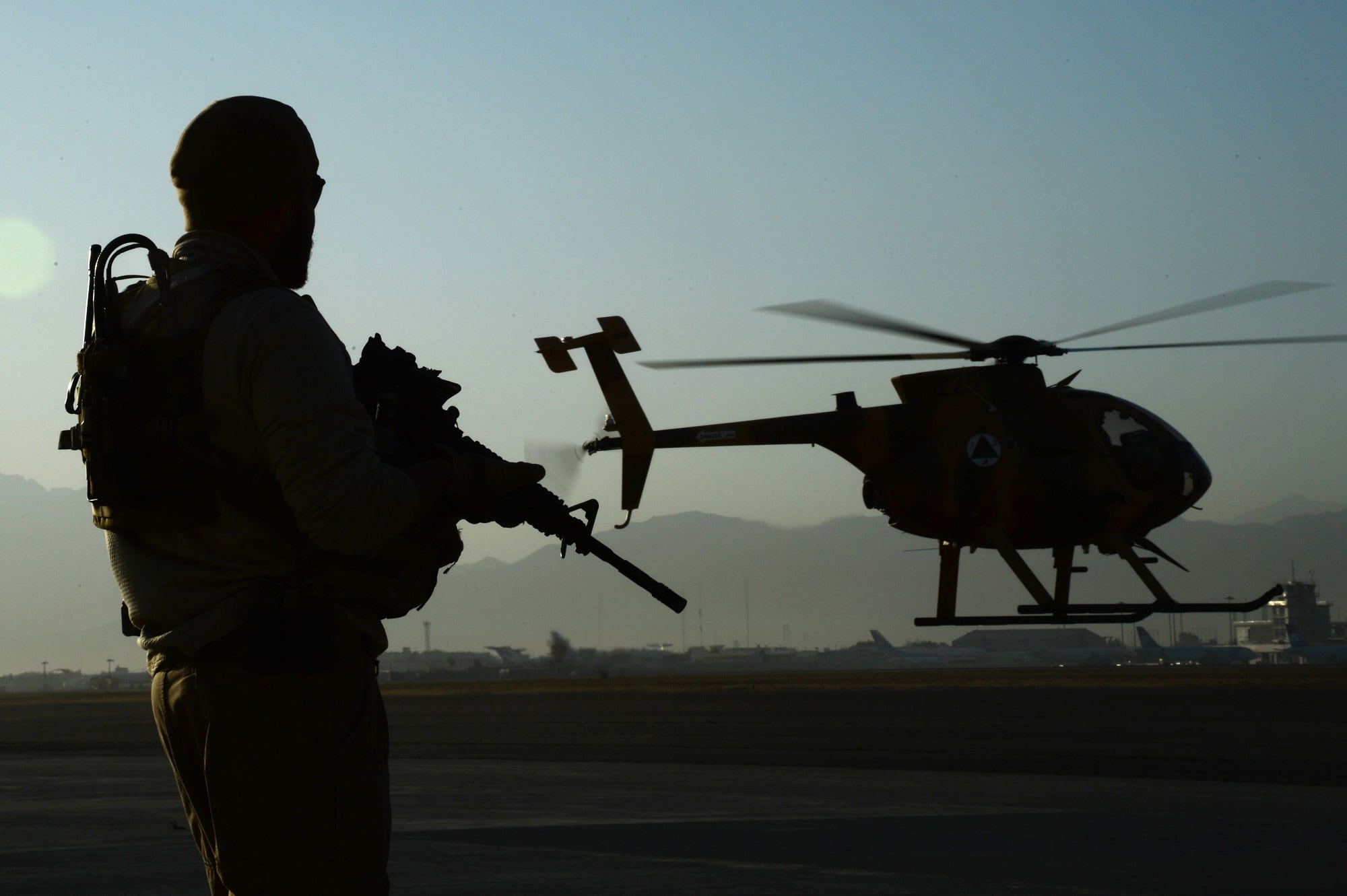As U.S. commanders prepare the Afghan security forces for an aggressive push against the Taliban this year, Marines are training a cadre of Afghan attack controllers to call in airstrikes.
During recent operations around Marjah, Afghan troops used small ScanEagle drones to identify targets, which were then destroyed by Afghan A-29 Super Tucano turboprop aircraft, said Marine Maj. Kendra Motz, a spokeswoman for Task Force Southwest.
The highly trained Afghan controllers are “making a tangible impact on the battlespace,” said Marine Capt. Robert Walters, an air adviser with Task Force Southwest.
It was the first time that Afghan Tactical Air Coordinators called in airstrikes on targets that were not stationary or preplanned, Motz told Marine Corps Times. By using drones and coordinating airstrikes with its own aircraft, the Afghan military outmaneuvered the enemy and now controls Marjah’s district center.
“With weeks of planning, training and integrating prior to [the Marjah operation], their close-air support is causing the Taliban to lose ground while the [Afghan National Defense and Security Forces] take that ground,” Walters said in a news release.
The Afghans’ successes comes after the Marine Corps expanded training for Afghan Tactical Air Coordinators from three to eight weeks, Motz said. The curriculum focuses on the close-air attack process, casualty evacuation, map reading and other skills that make Afghans more adept at destroying targets and getting wounded troops to safety.
Since President Trump took office, he has approved sending more U.S. trainers to Afghanistan to help Afghan troops and police reverse the Taliban’s momentum and destroy the Islamic State, which has taken root in Nangarhar province.
The Afghan security forces have struggled since the U.S. declared an end to combat operations at the end of 2014. Without U.S. airpower to support Afghan security forces, the Taliban and ISIS overran nearly half of the country.

Now the U.S. wants to boost the Afghan air force as part of a wider effort to prepare for the traditional fighting season, which begins in spring.
The U.S. military plans to “focus on offensive operations and we’ll look for a major effort to gain the initiative very quickly as we enter into the fighting season,” Army Gen. Joseph Votel, head of U.S. Central Command, told The Associated Press.
Votel said as the coalition builds up the Afghan Air Force and trains more security forces, the Afghans will become better fighters: “By the time they get to the next fight,” he said, “they will be able to really present a significant offensive capability.”
There are now as many as 16,000 U.S. forces in the country — almost double the size of the force that Trump inherited.
The Afghan air controllers training program was started a couple years ago, but Afghan air controllers have only recently taken part in operations in Helmand province, Motz, said.
“The first ATACs were successfully employed in Helmand in September 2017 while supporting Maiwand 6 in Gereshk,” Motz said. “Since then, ATACs have supported multiple operations in Marjah, Nad Ali and Sangin.”
In a relatively short time span, 18 Afghan controllers have graduated from the course, which includes learning how to coordinate casualty evacuation and close-air support missions with Afghan Mi-17 and MD-530 helicopters as well as C-208 fixed-wing planes, which are used as air ambulances. Graduates receive additional training from the Air Force’s 438th Air Expeditionary Wing.
The main aircraft that Afghan forces use for close-air support are the MD-530 Cayuse Warrior helicopters and A-29 Super Tucano. The lumbering Russian Mi-17s are typically used for troop transport and are slowly being phased out as Afghan forces switch to U.S. UH-60 Black Hawks.

“Airpower brings increased combat capability and independence to Afghan forces,” Gresback said. “Additionally, their freedom of ground maneuver provided by aerial fires and close-air attack capabilities is important to Afghan operations, and enables the Afghan Air Force to support corps and campaign objectives.”
The development comes as Gen. John Nicholson, the commander of U.S. forces in Afghanistan, has once again made the sparsely populated province a main focus of America’s new strategy in the region.
In the past several weeks, U.S. aircraft to include B-52s, F/A-18s, F-22s, F-16s, and even High Mobility Artillery Rocket System, or HIMARS, have struck Taliban poppy and opium processing labs in Helmand.
“The ATAC program and the concept of [close-air attack] are both very new to the Afghans and require a skill set that takes time to foster successfully,” Motz said. “Task Force Southwest advisers will continue to train, advise and assist the ATACs for the 215th Corps to further develop this capability.”
The Associated Press contributed to this story.
Shawn Snow is the senior reporter for Marine Corps Times and a Marine Corps veteran.





